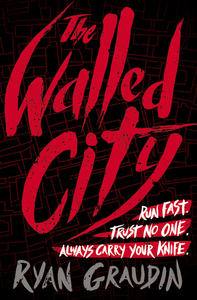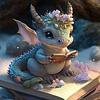Take a photo of a barcode or cover
I really like the book despite the reviews saying it was bad but the book was good . So I will give it 4.35
Not really sure how I feel about this one. Not mind-blowing and definitely not quite what I was expecting. I had been hoping for a little more historicity of Kowloon City, a little more of the culture (which I appreciate would be hard to write about since it was torn down the same year the author was born, but still...many of those people must still be alive to talk to), a little more of a super dense "Chinatown" feel and cultural flavor. Honestly, part of the special aspect and appeal of this book was the setting, but it felt like it could have been set almost anywhere at any time - it wasn't very distinct (and neither were the viewpoints of the three main characters, I might add). Also, a lot of really bad stuff goes down and in a city that cover less than 6 acres with 33,000 people in it, there is never anyone around to witness or stop kids beating up other kids, kids killing other kids. It was just too Lord of the Flies for me, and totally unbelievable in a city with such a dense population. It also attempted to tackle the child sex trade in a YA-friendly way...while it did definitely get across the message of violence, abuse, and inescapability of the system (so hopefully it brings some awareness to that), I think there are some mixed messages about victim choice and agency that I'm not sure about. I'm also not particularly enthralled with the role that wealth played as the benefactor to lift the girls out of tragedy either, since economics drive and fuel the child sex trafficking industry, but...an interesting (and unexpected - I did not realize this would be a topic handled when I initially picked this up) look into the complex issues at work (for better or worse). Actually, the more I think about this, the more problems I have with it, so hmmm...may merit a re-think/more in-depth review at a later date.
I can't remember when I first heard of the Kowloon Walled City, but the mere existence of the thing alone has always piqued my interest, and I didn't realize until I grabbed The Walled City that I might have an interest in a book that takes place within its walls (or in a similar setting).
The story here, however, is less about surviving in the city and more about teens surviving the corruption and crime that runs it. Teens mired in the drug trade, as prostitutes, and so on? Not an uplifting tale in any regard, and, while it may be realistic, it feels brutal and dystopian perhaps on purpose.
Overall, not a terrible read, as the pacing is solid and parts of the story definitely work, but mostly a miss for me based on those factors.
The story here, however, is less about surviving in the city and more about teens surviving the corruption and crime that runs it. Teens mired in the drug trade, as prostitutes, and so on? Not an uplifting tale in any regard, and, while it may be realistic, it feels brutal and dystopian perhaps on purpose.
Overall, not a terrible read, as the pacing is solid and parts of the story definitely work, but mostly a miss for me based on those factors.
Feels like fantasy, so exciting and full of characters to love, with so much humanity. Really wonderful.
1.5 stars.
I feel like this is a case of: it's not you, it's me.
Because objectively, there wasn't anything wrong with this book. The writing was fine. The premise was interesting. The characters were diverse. There's even a girl who disguises herself as a boy! I should be into this.
But I just... wasn't. I never got hooked in. I started getting bored and then I started skimming. Which, that's pretty much the death of things for me.
But don't let my poor opinion sour things for you. You might like this! I just didn't.
I feel like this is a case of: it's not you, it's me.
Because objectively, there wasn't anything wrong with this book. The writing was fine. The premise was interesting. The characters were diverse. There's even a girl who disguises herself as a boy! I should be into this.
But I just... wasn't. I never got hooked in. I started getting bored and then I started skimming. Which, that's pretty much the death of things for me.
But don't let my poor opinion sour things for you. You might like this! I just didn't.
Wow!!! Fantastic writing. This story is propelled by a rich imagination: characters, plot, atmosphere, sense of place all rendered with precision and control. This novel has everything, including a bad-ass cat.
Disclaimer: I received a copy of this book from the publisher in exchange for a review.
This review originally appeared on my blog: The Literarium
Three teens live within the dangerous and crime-ridden Walled City of Hong Kong, China. Dai, a drug trafficker for the biggest drug lord in the city, will stop at nothing to gain his freedom, even with help from the most dangerous people. Meanwhile, Jin haunts the city streets, living the life of a boy in order to survive; all the while she hopes no one will realize her deception. Through all of this she hunts for her sister. Mei Yee is confined to one of the Walled City’s many brothels as a prostitute. A prisoner here for a couple of years, she watches all the girls around her succumb to the brothel’s brutal punishments for trying to escape; a goal she hopes to one day achieve. These three unlikely heroes will come together to fight their way through a ruthless labyrinth and must get out before the clock winds down.
I have a lot to say about this book, and I will start with my initial reaction upon getting a novel with Asian characters. This is what I thought: “It’s about damn time.” It still seems rare to find YA fiction focusing on a non-western perspective, so I was excited to get this book, and when I did, I wanted to dive into it immediately. The novel is set in a fictionalized version of an actual Chinese city: Kowloon Walled City in Hong Kong right before control of the city transferred from British control to Chinese governance. This space and time period provides a unique setting that isn’t found in most of YA fiction. We don’t see many novels set in China, or anywhere in the East for that matter.
I also liked the fact that the characters were non-white and non-Western. There is an ongoing discussion in the publishing world and academia about the need for diversity in fiction and the need to publish more authors of color. I think this argument can be applied to the content of books being published these days as well; we need more non-white characters. There’s not enough of them. So, this was one aspect of this book that excited me and is something that is unique as well. The author is inventive in her choice of characters and setting, going against the grain of what is usual for the YA market. So, I applaud any author that attempts to write diversely.
Overall, this book was entertaining, and it was a fun diversion from the more serious and sad issues in my personal life that I’ve been dealing with for the past few weeks. The action is a quick and blurring trek through the most crime-ridden alleys of China’s slums. I blazed through the action with each character, and there was enough tension to keep me turning the pages. However, the fun, the entertainment, and even admittedly the engrossing nature of the novel couldn’t distract me from what I feel is the pervading cultural essentialism I found as I read.
First, what makes this book ultimately unlikable for me are the metaphors and similes used in varying descriptions for the first half to two-thirds of the novel. This grew tiring and unoriginal very quickly. I particularly became angry when the author repeatedly describes the characters’ actions, feelings, interactions with the world, or their comparisons of things in terms of the following: rice, noodles, fish, dragons, or a combination of those and more. This quickly began to feel like Orientalism. Rice, noodles, rice noodles, fish, dragons and the like are not the only things Asians eat nor are they how the Chinese internalize and understand the world around them–as if in terms of one’s hands being as white as rice or something being curved like a rice scythe. It’s a western romanticized image of the East, and Asians don’t see everything in terms of a grain of rice. Instead, why couldn’t the curve be described in terms of just a scythe? I can see the image without it being about rice. In a nutshell, it’s predictable and boring.
I also have technical/theoretical issues with a white author writing Asian characters when it comes to giving this marginalized cultural group their own voice in fiction–in reality, it isn’t actually an Asian voice because their representation is being filtered through a white Western lens, so the cultural other as you would call them doesn’t actually speak and is still silenced. This is particularly evident through the way the descriptions are handled, which I discussed above. When Amy Tan writes Asian characters, it’s evident that the voice coming through is authentically Asian, and she doesn’t have to use metaphors like the ones above. Haruki Murakami is another great example of Asian characters that are crafted accurately. He is a Japanese author writing Japanese characters in Japan, and not once have I ever come across him describing things in terms of rice or any of the aforementioned metaphors. Readers can tell his characters are Japanese and authentic through names, the places characters go, and how their features are described. I don’t get that authenticity at all with Graudin’s book. If I picked up this book and nowhere did it say that these were Asian characters, or that the setting was China, I never would have known. I would have assumed they were white. The voice is not at all distinct from any other characters; they aren’t even distinct between the three of them. I can’t tell Mei Yee apart from Jin, and sometimes I thought I was reading Jin’s part when it was Dai’s. Everything reads the same. There’s no authentic and distinct voice among them. However, I’m not saying that people can’t write what they want; by all means, knock yourself out, write Asian characters. However, authenticity is important when giving voice to a minority demographic in literature; this is something that should be of concern. How do we deal with this dichotomy between authenticity and art? For the basis of my opinion, you can read Gayatri Chakravorty Spivak’s “Can the Subaltern Speak?” Her essay touches on this very issue and is some food for thought in this avenue. Overall, the content just felt shallow and essentialist in terms of writing a Chinese voice.
Conversely, Graudin does some things right too. The pacing of the novel is fast; it reads almost like a movie. The characters are interesting people and again are not the cookie-cutter YA character types; there’s no sickening love triangle from the get-go, no standard heroine and hero story arch; this is refreshing. The characters also participate in less-than-desirable professions and activities which makes them intriguing. We have a prostitute, a drug trafficker, and a girl masquerading as a boy, three character types we don’t find in most of popular YA fiction. They are unique in this sense and easy to follow along with on their journeys. However, overall the premise was interesting and aimed to be inventive, it was just executed poorly.
Overall, I would recommend giving this book a try because plenty of people like it, and it has many good points, and it is indeed worth a weekend read. However, I don’t think it’s anything beyond that.
This review originally appeared on my blog: The Literarium
Three teens live within the dangerous and crime-ridden Walled City of Hong Kong, China. Dai, a drug trafficker for the biggest drug lord in the city, will stop at nothing to gain his freedom, even with help from the most dangerous people. Meanwhile, Jin haunts the city streets, living the life of a boy in order to survive; all the while she hopes no one will realize her deception. Through all of this she hunts for her sister. Mei Yee is confined to one of the Walled City’s many brothels as a prostitute. A prisoner here for a couple of years, she watches all the girls around her succumb to the brothel’s brutal punishments for trying to escape; a goal she hopes to one day achieve. These three unlikely heroes will come together to fight their way through a ruthless labyrinth and must get out before the clock winds down.
I have a lot to say about this book, and I will start with my initial reaction upon getting a novel with Asian characters. This is what I thought: “It’s about damn time.” It still seems rare to find YA fiction focusing on a non-western perspective, so I was excited to get this book, and when I did, I wanted to dive into it immediately. The novel is set in a fictionalized version of an actual Chinese city: Kowloon Walled City in Hong Kong right before control of the city transferred from British control to Chinese governance. This space and time period provides a unique setting that isn’t found in most of YA fiction. We don’t see many novels set in China, or anywhere in the East for that matter.
I also liked the fact that the characters were non-white and non-Western. There is an ongoing discussion in the publishing world and academia about the need for diversity in fiction and the need to publish more authors of color. I think this argument can be applied to the content of books being published these days as well; we need more non-white characters. There’s not enough of them. So, this was one aspect of this book that excited me and is something that is unique as well. The author is inventive in her choice of characters and setting, going against the grain of what is usual for the YA market. So, I applaud any author that attempts to write diversely.
Overall, this book was entertaining, and it was a fun diversion from the more serious and sad issues in my personal life that I’ve been dealing with for the past few weeks. The action is a quick and blurring trek through the most crime-ridden alleys of China’s slums. I blazed through the action with each character, and there was enough tension to keep me turning the pages. However, the fun, the entertainment, and even admittedly the engrossing nature of the novel couldn’t distract me from what I feel is the pervading cultural essentialism I found as I read.
First, what makes this book ultimately unlikable for me are the metaphors and similes used in varying descriptions for the first half to two-thirds of the novel. This grew tiring and unoriginal very quickly. I particularly became angry when the author repeatedly describes the characters’ actions, feelings, interactions with the world, or their comparisons of things in terms of the following: rice, noodles, fish, dragons, or a combination of those and more. This quickly began to feel like Orientalism. Rice, noodles, rice noodles, fish, dragons and the like are not the only things Asians eat nor are they how the Chinese internalize and understand the world around them–as if in terms of one’s hands being as white as rice or something being curved like a rice scythe. It’s a western romanticized image of the East, and Asians don’t see everything in terms of a grain of rice. Instead, why couldn’t the curve be described in terms of just a scythe? I can see the image without it being about rice. In a nutshell, it’s predictable and boring.
I also have technical/theoretical issues with a white author writing Asian characters when it comes to giving this marginalized cultural group their own voice in fiction–in reality, it isn’t actually an Asian voice because their representation is being filtered through a white Western lens, so the cultural other as you would call them doesn’t actually speak and is still silenced. This is particularly evident through the way the descriptions are handled, which I discussed above. When Amy Tan writes Asian characters, it’s evident that the voice coming through is authentically Asian, and she doesn’t have to use metaphors like the ones above. Haruki Murakami is another great example of Asian characters that are crafted accurately. He is a Japanese author writing Japanese characters in Japan, and not once have I ever come across him describing things in terms of rice or any of the aforementioned metaphors. Readers can tell his characters are Japanese and authentic through names, the places characters go, and how their features are described. I don’t get that authenticity at all with Graudin’s book. If I picked up this book and nowhere did it say that these were Asian characters, or that the setting was China, I never would have known. I would have assumed they were white. The voice is not at all distinct from any other characters; they aren’t even distinct between the three of them. I can’t tell Mei Yee apart from Jin, and sometimes I thought I was reading Jin’s part when it was Dai’s. Everything reads the same. There’s no authentic and distinct voice among them. However, I’m not saying that people can’t write what they want; by all means, knock yourself out, write Asian characters. However, authenticity is important when giving voice to a minority demographic in literature; this is something that should be of concern. How do we deal with this dichotomy between authenticity and art? For the basis of my opinion, you can read Gayatri Chakravorty Spivak’s “Can the Subaltern Speak?” Her essay touches on this very issue and is some food for thought in this avenue. Overall, the content just felt shallow and essentialist in terms of writing a Chinese voice.
Conversely, Graudin does some things right too. The pacing of the novel is fast; it reads almost like a movie. The characters are interesting people and again are not the cookie-cutter YA character types; there’s no sickening love triangle from the get-go, no standard heroine and hero story arch; this is refreshing. The characters also participate in less-than-desirable professions and activities which makes them intriguing. We have a prostitute, a drug trafficker, and a girl masquerading as a boy, three character types we don’t find in most of popular YA fiction. They are unique in this sense and easy to follow along with on their journeys. However, overall the premise was interesting and aimed to be inventive, it was just executed poorly.
Overall, I would recommend giving this book a try because plenty of people like it, and it has many good points, and it is indeed worth a weekend read. However, I don’t think it’s anything beyond that.
The prose got a little cheesy and nonsensical, and overall something felt like it was missing. But I really enjoyed how all the parts of the story came together, the worldbuilding, and Jin Ling's character. It would've been so easy to shoebox her into the "not like other girls" trope because of her role in the story, but she's not. She's just feral and I love it.
"Dai, Jin, and Mei Yee are all trapped in the Walled City, a place of nightmares, death, and corruption. Dai is running from his past and is on a secret mission. For one of his drug runs, he needs a quick runner, and he finds Jin, a girl disguised as a boy, who is trying to find her sister, Mei Yee. Mei Yee is living in a brothel, stuck watching the girls who try to run get hurt and nearly helpless to do anything about it. When the three paths of theirs collide, they may find a way out of the dangerous city." Full review at Fresh Fiction: http://freshfiction.com/review.php?id=49777






